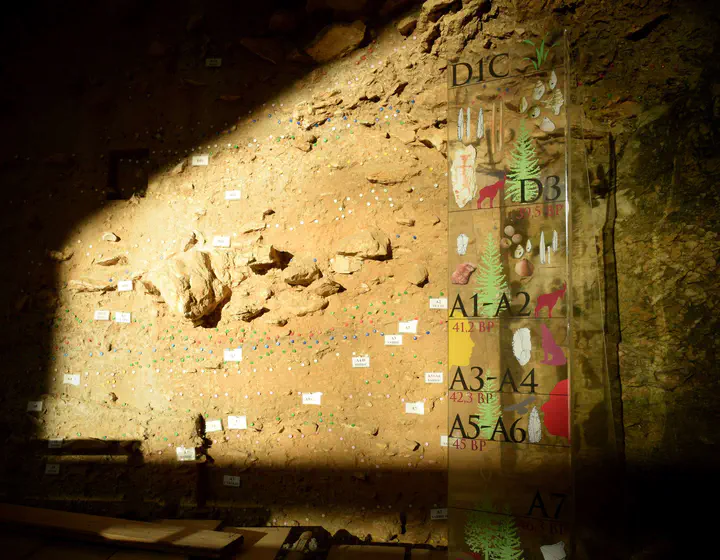
Abstract
The Early Upper Paleolithic marks a turning point in the history of human evolution. Among the techno-complexes that characterize this period, the Aurignacian has received most of the attention because of its direct association with the spread of the modern humans into Europe. However, research has often neglected its important synchronic and diachronic variability. Regional studies and accurate re-evaluation of pivotal sites are thus fundamental in deconstructing the notion of the Aurignacian. This paper presents the results of an extensive techno-typological analysis of the lithic assemblages and a re-evaluation of the organic artifacts from five cultural units at Fumane Cave (Veneto, Italy). Furthermore, retouched bladelets from two Protoaurignacian sites, Isturitz (Basque Country, France) and Les Cottés (Vienne, France), are analyzed and compared to the record from Fumane Cave. The main research goals were to reassess the technological signature of the Protoaurignacian and examine the development of the Aurignacian in northern Italy to test whether the so-called “Aquitaine Model” can be applied to the whole European extent. Results of the empirical study and the inter-site comparison confirm that the Protoaurignacian is an industry dominated by bladelet implements, although lamellar production is based on a broad range of reduction strategies that are not related to the dwindling core dimensions as blade production progressed. Although rather homogeneous from a technological standpoint, the variability of retouched bladelets emphasizes the differences that exist between the Protoaurignacian regional groups. The study on the diachronic variability of the Aurignacian at Fumane Cave rejects the recurring practice, well-established among Paleolithic archaeologists, to transfer a regional model to geographically distant case studies. At Fumane Cave, the techno-typological features of the Protoaurignacian clearly persists throughout the stratigraphic sequence with some gradual variations that are less marked if compared to other sequences. Thus, both the “Aquitaine Model” and the idea according to which the Protoaurignacian vanished at the onset of the Heinrich 4 are invalidated when applied to northern Italy. In conclusion, this paper exemplifies how the re-evaluation of pivotal sites and the definition of regional signatures are able to yield new insights into the beginning and development of the European Upper Paleolithic.